Monacor HSE-120 Handleiding
Bekijk gratis de handleiding van Monacor HSE-120 (2 pagina’s), behorend tot de categorie Microfoon. Deze gids werd als nuttig beoordeeld door 42 mensen en kreeg gemiddeld 3.9 sterren uit 21.5 reviews. Heb je een vraag over Monacor HSE-120 of wil je andere gebruikers van dit product iets vragen? Stel een vraag
Pagina 1/2

w
w
w
www
w
w
www
w
w
ww.i
.i
.i
.i.img
mg
mg
mgmgst
st
st
ststag
ag
ag
agagel
el
el
elelin
in
in
inine.
e.
e.
e.e.co
co
co
cocom
m
m
mm
Kopfbügel-Mikrofon
Bitte lesen Sie diese Bedienungsanleitung vor
dem Betrieb gründlich durch und heben Sie sie für
ein späteres Nachlesen auf.
1 Einsatzmöglichkeiten
Das Kopfbügel-Mikrofon HSE-1xx eignet sich opti-
mal für Ge sangs- und Sprachanwendungen, die
viel Bewegungsfreiheit erfordern. Für den Betrieb
wird eine Gleichspannung zwischen 1,3 V und
20 V benötigt. Hierzu ist aus dem Sortiment von
„img Stage Line“ speziell für das Modell HSE-110
ein Speiseadapter (z. B. EMA-1, EMA-2, EMA-40,
EMA-300P) oder zur drahtlosen Tonübertragung
ein Taschensender (TXS-...HSE) erhältlich.
2 Hinweise für den sicheren Gebrauch
Das Mikrofon entspricht allen erforderlichen Richt-
linien der EU und ist deshalb mit gekennzeich-
net.
GSetzen Sie das Mikrofon nur im Innenbereich
ein und schützen Sie es vor Tropf- und Spritz-
wasser, hoher Luftfeuchtigkeit und Hitze (zuläs-
siger Einsatztemperaturbereich 0 – 40 °C).
GVerwenden Sie für die Reinigung nur ein tro-
ckenes, weiches Tuch, niemals Chemikalien
oder Wasser.
GWird das Mikrofon zweckentfremdet, falsch
ange schlos sen oder nicht fachgerecht repariert,
kann keine Haftung für daraus resultierende
Sach- oder Personenschäden und keine Garan-
tie für das Mikrofon übernommen werden.
3 Inbetriebnahme
1) Das Kopfbügel-Mikrofon aufsetzen und die
Mikrofonkapsel dicht vor dem Mund in eine
günstige Sprechposition bringen. Dazu lässt
sich der Mikrofonarm in alle Richtungen biegen.
2) Das Mikrofon an das nachfolgende Gerät an -
schließen, siehe Abbildung. Eventuell einen
Speiseadapter zwischenschalten.
Soll das Mikrofon endgültig aus dem
Betrieb genommen werden, übergeben
Sie es zur umweltgerechten Entsorgung
einem örtlichen Recyclingbetrieb.
4 Technische Daten
Mikrofontyp: . . . . . . . . . Back-Elektret
Richtcharakteristik: . . . . Super-Niere
Frequenzbereich: . . . . . 20 – 20 000 Hz
Impedanz: . . . . . . . . . . . 3 kΩ
Empfindlichkeit: . . . . . . . 7 mV/Pa bei 1 kHz
Maximaler Schalldruck: . 120 dB
Stromversorgung: . . . . . 1,3 – 20 V
Gewicht ohne Kabel: . . . 75 g
Anschluss:
Änderungen vorbehalten.
Headband Microphone
Please read these operating instructions carefully
prior to operating the unit and keep them for later
use.
1 Applications
The headband microphone HSE-1xx is ideally
suited for vocal sound and speech applications
which require much freedom of movement. For the
operation a DC voltage between 1.3 V and 20 V is
necessary. Especially for the model HSE-110
a power supply adapter (e. g. EMA-1, EMA-2,
EMA-40, EMA-300P) or for wireless audio trans-
mission a pocket transmitter (TXS-…HSE) is avail-
able from the product range of “img Stage Line”.
2 Safety Notes
The microphone corresponds to all required direc-
tives of the EU and is therefore marked with .
GThe microphone is suitable for indoor use only.
Protect it against dripping water and splash
water, high air humidity, and heat (admissible
ambient temperature range 0 – 40 °C).
GFor cleaning only use a dry, soft cloth, by no
means chemicals or water.
GNo guarantee claims for the microphone or lia-
bility for any resulting personal damage or
material damage will be accepted if the micro-
phone is used for other purposes than originally
intended, if it is not correctly connected or not
repaired in an expert way.
3 Setting into Operation
1) Put on the headband microphone and place the
microphone cartridge close to the mouth into a
favourable talk position. For this purpose the
microphone arm can be moved in all directions.
2) Connect the microphone to the following unit,
see figure. If necessary, insert a power supply
adapter.
If the microphone is to be put out of oper-
ation definitively, take it to a local recy-
cling plant for a disposal which is not
harmful to the environment.
4 Specifications
Microphone type: . . . . . back electret
Pick-up characteristic: . . hypercardioid
Frequency range: . . . . . 20 – 20 000 Hz
Impedance: . . . . . . . . . . 3 kΩ
Sensitivity: . . . . . . . . . . . 7 mV/Pa at 1 kHz
SPL max.: . . . . . . . . . . . 120 dB
Power supply: . . . . . . . . 1.3 – 20 V
Weight w/o cable: . . . . . 75 g
Connection:
Subject to technical modification.
Microphone serre-tête
Veuillez lire la présente notice avec attention
avant le fonctionnement et conservez-la pour pou-
voir vous y reporter ultérieurement.
1 Possibilités dʼutilisation
Le microphone serre-tête HSE-1xx, est idéale-
ment adapté pour des applications de discours et
de chant requérant une grande liberté de mouve-
ments. Pour le fonctionnement, une tension conti-
nue entre 1,3 V et 20 V est nécessaire. Pour le
modèle HSE-110, un adaptateur dʼalimentation
(p. ex. EMA-1, EMA-2, EMA-40 ou EMA-300P) ou
un émetteur de poche pour la transmission audio
sans fil (TXS-…HSE) dans la gamme “img Stage
Line”, est disponible.
2 Conseils dʼutilisation et de sécurité
Le microphone répond à toutes les directives
nécessaires de lʼUnion Européenne et porte donc
le symbole .
GLe microphone nʼest conçu que pour une utili-
sation en intérieur. Protégez-le de tout type de
projections dʼeau, des éclaboussures, dʼune hu -
midité élevée et de la chaleur (plage de tempé-
rature de fonctionnement autorisée : 0 – 40 °C).
GPour le nettoyer, utilisez uniquement un chiffon
sec et doux, en aucun cas de produits chi-
miques ou dʼeau.
GNous déclinons toute responsabilité en cas de
dommages matériels ou corporels résultants si
le microphone est utilisé dans un but autre que
celui pour lequel il a été conçu, sʼil nʼest pas cor-
rectement branché ou sʼil nʼest pas réparé par
une personne habilitée ; en outre, la garantie
deviendrait caduque.
3 Fonctionnement
1) Placez le micro serre-tête et positionnez la cap-
sule micro près de la bouche dans une position
favorable pour parler. Le bras du micro peut
être bougé dans toutes les directions.
2) Reliez le microphone à lʼappareil suivant, voir
schéma. Si besoin, intercalez un adaptateur
dʼalimentation.
Lorsque le microphone est définitive-
ment retiré du service, vous devez le
déposer dans une usine de recyclage
adaptée pour contribuer à son élimina-
tion non polluante.
4 Caractéristiques techniques
Type micro : . . . . . . . . . back électret
Caractéristique
(Directivité) : . . . . . . . . . hypercardioïde
Bande passante : . . . . . 20 –20 000 Hz
Impédance : . . . . . . . . . 3 kΩ
Sensibilité : . . . . . . . . . . 7 mV/Pa à 1 kHz
Pression sonore max. : . 120 dB
Alimentation : . . . . . . . . 1,3 – 20 V
Poids sans câble : . . . . . 75 g
Branchement :
Tout droit de modification.
HSE-100 Best.-Nr. 23.2160 Best.-Nr. 23.2170 Best.-Nr. 23.2180HSE-110 HSE-120
GB
D A CH
F B CH
HSE-100 rot = 1,3
-
20
V¿
weiß = Signal
1
2
3
1,3
-
20
V¿
Signal
Signal
1,3
-
20
V¿
Abschirmung
Abschirmung
Abschirmung
HSE-110
HSE-120
mit abisolierten Kabelenden
mit Mini-XLR-Kupplung
mit 3,5-mm-Klinkenstecker
HSE-100 red = 1.3
-
20
V¿
white = signal
1
2
3
1.3
-
20
V¿
signal
signal
1.3
-
20
V¿
screening
screening
screening
HSE-110
HSE-120
with stripped cable ends
with mini XLR inline jack
with 3.5 mm plug
HSE-100 rouge = 1,3
-
20
V¿
blanc = signal
1
2
3
1,3
-
20
V¿
signal
signal
1,3
-
20
V¿
blindage
blindage
blindage
HSE-110
HSE-120
avec extrémités de câble
isolées
avec mini fiche XLR femelle
avec fiche jack 3,5 mâle
®
MONACOR INTERNATIONAL GmbH & Co. KG
•
Zum Falsch 36
•
28307 Bremen
•
Germany
Copyright
©
by MONACOR INTERNATIONAL. All rights reserved. A-0528.99.03.05.2011

w
w
w
www
w
w
www
w
w
ww.i
.i
.i
.i.img
mg
mg
mgmgst
st
st
ststag
ag
ag
agagel
el
el
elelin
in
in
inine.
e.
e.
e.e.co
co
co
cocom
m
m
mm
Microfono headset
Vi preghiamo di leggere attentamente le presenti
istruzioni prima della messa in funzione e di con-
servarle per un uso futuro.
1 Possibilità dʼimpiego
Il microfono headset HSE-1xx è adatto in modo
ottimale per applicazioni di canto e di lingua par-
lata che richiedono molta libertà di movimento.
Per il funzionamento è richiesta una tensione con-
tinua fra 1,3 V e 20 V. A tale scopo sono disponi-
bili, dal programma di “img Stage Line”, special-
mente per il modello HSE-110 un adattatore di
alimentazione (p. es. EMA-1, EMA-2, EMA-40,
EMA-300P) oppure, per la trasmissione audio
senza fili, un trasmettitore tascabile (TXS-...HSE).
2 Avvertenze di sicurezza
Il microfono è conforme a tutte le direttive richie-
ste dellʼUE e pertanto porta la sigla .
GFar funzionare il microfono solo allʼinterno di
locali e proteggerlo dallʼacqua gocciolante e
dagli spruzzi dʼacqua, da alta umidità dellʼaria e
dal calore (temperatura dʼimpiego ammessa fra
0 e 40 °C).
GPer la pulizia usare solo un panno morbido,
asciutto; non impiegare in nessun caso prodotti
chimici o acqua.
GNel caso dʼuso improprio, di collegamenti sba-
gliati o di riparazione non a regola dʼarte del
microfono, non si assume nessuna responsabi-
lità per eventuali danni consequenziali a per-
sone o a cose e non si assume nessuna garan-
zia per il microfono.
3 Messa in funzione
1) Sistemare il microfono headset in testa e por-
tare la capsula del microfono vicino alla bocca
in una posizione adatta per parlare. A tale
scopo, il braccio del microfono può essere pie-
gato in tutte le direzioni.
2) Collegare il microfono con lʼapparecchio a valle,
vedi illustrazione. Eventualmente inserire un
adattatore di alimentazione.
Se si desidera eliminare il microfono
definitivamente, consegnarlo per lo
smaltimento ad unʼistituzione locale per
il riciclaggio.
Micro diadema
Por favor, lea este manual de instrucciones deta-
lladamente antes de hacer funcionar la unidad y
guárdelo para una futura utilización.
1 Aplicaciones
El micro de diadema HSE-1xx está especialmente
diseñado para sonido vocal y aplicaciones de
habla que requieren mucha libertad de movi-
miento. Para el funcionamiento es necesaria una
tensión DC entre 1,3 V y 20 V. Especialmente para
el modelo HSE-110 un adaptador de alimentación
(por ejemplo EMA-1, EMA-2, EMA-40, EMA-
300P) o para transmisión inalámbrica un transmi-
sor de petaca (TXS-...HSE) están disponibles
dentro de la gama “img Stage Line”.
2 Notas de seguridad
El micro cumple con todas las normativas que
requiere la UE y es por esto que está marcada
con .
GEl micro p2-ha estado diseñado solamente para la
utilización en el interior. Protéjalo contra las sal-
picaduras y las proyecciones de agua, una alta
humedad del aire y del calor (temperatura de
ambiente admisible 0 – 40 °C).
GPara la limpieza utilice únicamente un trapo
seco y suave, nunca utilice productos químicos
o agua.
GLa unidad carecería de todo tipo de garantía en
caso de daños personales o materiales resultan-
tes de una utilización de la unidad con otro fin del
que le es propio, si no está correctamente conec-
tada o no p2-ha estado reparada por un experto.
3 Puesta en funcionamiento
1) Póngase el micro de diadema y coloque la cáp-
sula del micro de manera que le quede cerca
de la boca en una posición favorable para
hablar. Para hacerlo, puede mover el brazo del
micro en todas las direcciones.
2) Conecte el micro a la otra unidad, vea es -
quema. Si es necesario, utilice un adaptador de
alimentación.
Si el micro está definitivamente retirado
de servicio, llévelo a una planta de reci-
claje próxima para contribuir a su elimi-
nación no contaminante.
4 Especificaciones
Tipo de micro: . . . . . . . . back electret
Característica: . . . . . . . . supercardioide
Índice de frecuencia: . . . 20 –20 000 Hz
Impedancia: . . . . . . . . . 3 kΩ
Sensitividad: . . . . . . . . . 7 mV/ Pa a 1 kHz
Presión sonora máx.: . . 120 dB
Fuente de alimentación: 1,3 – 20 V
Peso sin cable: . . . . . . . 75 g
Conexión:
Sujeto a modificaciones técnicas.
HSE-100 Best.-Nr. 23.2160 Best.-Nr. 23.2170 Best.-Nr. 23.2180HSE-110 HSE-120
I
E
HSE-100 rojo = 1,3
-
20
V¿
blanco = señal
1
2
3
1,3
-
20
V¿
señal
señal
1,3
-
20
V¿
blindaje
blindaje
blindaje
HSE-110
HSE-120
con cables pelados
con jack XLR mini en línea
con toma de 3,5mm
4 Dati tecnici
Tipo di microfono: . . . . . back-elettrete
Caratteristica
direzionale: . . . . . . . . . . ipercardioide
Gamma di frequenze: . . 20 – 20 000 Hz
Impedenza: . . . . . . . . . . 3 kΩ
Sensibilità: . . . . . . . . . . 7 mV/ Pa con 1 kHz
Pressione sonora max.: 120 dB
Alimentazione: . . . . . . . 1,3 – 20 V
Peso senza cavo: . . . . . 75 g
Collegamento:
Con riserva di modifiche tecniche.
®
MONACOR INTERNATIONAL GmbH & Co. KG
•
Zum Falsch 36
•
28307 Bremen
•
Germany
Copyright
©
by MONACOR INTERNATIONAL. All rights reserved. A-0528.99.03.05.2011
HSE-100 rosso = 1,3
-
20
V¿
bianco = segnale
1
2
3
1,3
-
20
V¿
segnale
segnale
1,3
-
20
V¿
schermatura
schermatura
schermatura
HSE-110
HSE-120
con terminali del cavo deisolati
con presa Mini-XLR
con jack 3,5mm
Mikrofon nagłowny
Prosimy o uważne przeczytanie poniższej in struk-
cji przed użyciem urządzenia, oraz o zachowanie
tekstu do wglądu.
1 Zastosowanie
Mikrofon nagłowny HSE-1xx jest mikrofonem
woka lowym (do zastosowań muzycznych oraz
konferencyjnych). Jest idealny do zastosowania
tam, gdzie potrzebna jest duża swoboda ruchu.
Do poprawnej pracy wymagane jest zasilanie prą-
dem stałym (1,3 – 20 V). W ofercie “img Stage
Line” dostępne są zasilacze do mikrofonu
HSE-110 (np. EMA-1, EMA-2, EMA-40, EMA-
300P) lub nadajnik kieszonkowy do bezprzewo-
dowej transmisji akustycznej (z serii TXS-...HSE).
2Bezpieczeństwo użytkowania
Ponieważ urządzenie spełnia wymogi obowiązu-
jące w Unii Europejskiej, jest oznaczone symbo-
lem .
GUrządzenie jest przeznaczone do użytku tylko
w pomieszczeniach. Urządzenie należy chronić
przed działaniem wody, wysokiej wilgot ności
powietrza oraz wysokiej temperatury (dopu sz-
czalna temperatura otoczenia pracy 0 – 40 °C).
GDo czyszczenia urządzenia należy używać
suchej, miękkiej tkaniny; nie należy stosować
wody ani środków czyszczących.
GProducent ani dostawca nie ponoszą odpowie-
dzialności za wynikłe szkody (uszkodzenie
sprzętu lub obrażenia użytkownika), jeśli
urządzenie było używane niezgodnie z prze-
znaczeniem, niewłaściwie zainstalowane lub
obsługiwane, albo jeśli było poddawane nieau-
toryzowanym naprawom.
3 Przygotowanie do pracy
1) Należy założyć mikrofon na głowę, umieścić
wkładkę mikrofonową blisko ust w wygodnej
pozycji. W tym celu można poruszać ramie-
niem mikrofonu we wszystkich kierunkach.
2) Należy podłączyć mikrofon do podłączyć
gniazdo nakablowe typu mini XLR do gniazda
nadajnika kieszonkowego lub zasilacza (zasi-
lacz należy następnie połączyć z wejściem
urządzenia audio). W razie potrzeby należy
podłączyć zasilacz.
Jeśli urządzenie p2-ma zostać ostatecznie
wycofane z użycia, należy przekazać je
do punktu utylizacji odpadów, aby unik-
nąć zanieczyszczenia środowiska.
4 Dane techniczne
Typ mikrofonu: . . . . . . . mikrofon elektretowy
Charakterystyka
mikrofonu: . . . . . . . . . . . hiperkardioida
Pasmo przenoszenia : . 20 –20 000 Hz
Impedancja: . . . . . . . . . 3 kΩ
Czułość: . . . . . . . . . . . . 7 mV/ Pa przy 1 kHz
Maks. SPL.: . . . . . . . . . . 120 dB
Zasilanie: . . . . . . . . . . . 1,3 – 20 V
Waga (bez kabla): . . . . . 75 g
Podłączenie:
Może ulec zmianie.
HSE-100
czerwony = 1,3
-
20
V¿
biały = sygnał
1
2
3
1,3
-
20
V¿
sygnał
sygnał
1,3
-
20
V¿
ekranowanie
ekranowanie
ekranowanie
HSE-110
HSE-120
gołe zakończenie kabla
z gniazdem nakablowym mini XLR
z wtykiem 3,5 mm
PL
Product specificaties
| Merk: | Monacor |
| Categorie: | Microfoon |
| Model: | HSE-120 |
Heb je hulp nodig?
Als je hulp nodig hebt met Monacor HSE-120 stel dan hieronder een vraag en andere gebruikers zullen je antwoorden
Handleiding Microfoon Monacor

22 Juni 2023

19 Juni 2023

19 Juni 2023

19 Juni 2023

18 Juni 2023

16 Juni 2023

15 Juni 2023

11 Juni 2023

11 Juni 2023

11 Juni 2023
Handleiding Microfoon
- Warm Audio
- Yealink
- Day
- Fluid
- HQ Power
- Livoo
- Williams Sound
- AmpliVox
- Lorgar
- Audix
- Rode
- Relacart
- Nedis
- ANT
- Nuance
Nieuwste handleidingen voor Microfoon
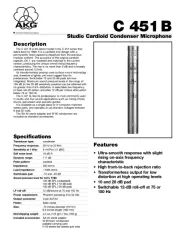
2 Augustus 2025
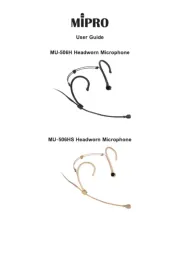
29 Juli 2025
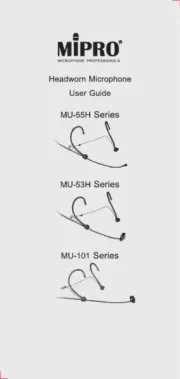
29 Juli 2025
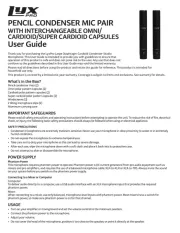
29 Juli 2025

29 Juli 2025
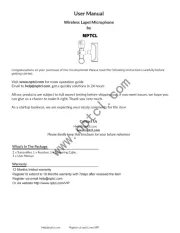
28 Juli 2025
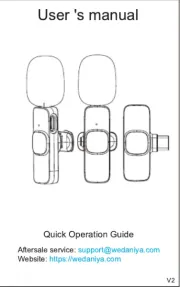
28 Juli 2025
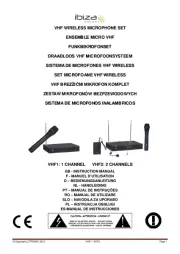
28 Juli 2025
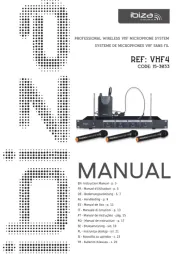
28 Juli 2025
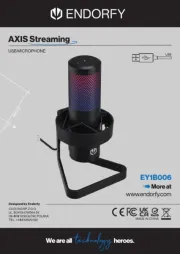
23 Juli 2025